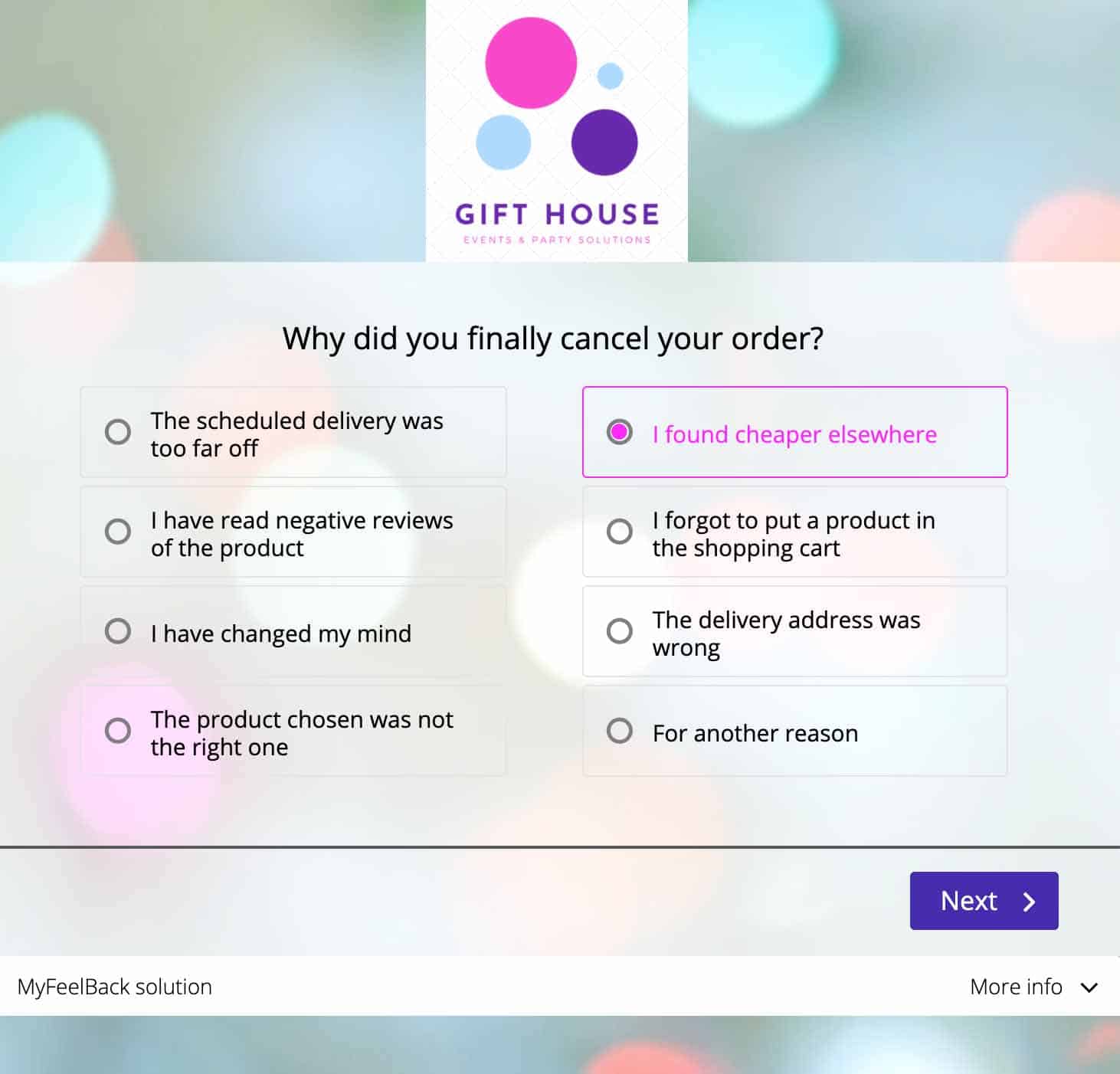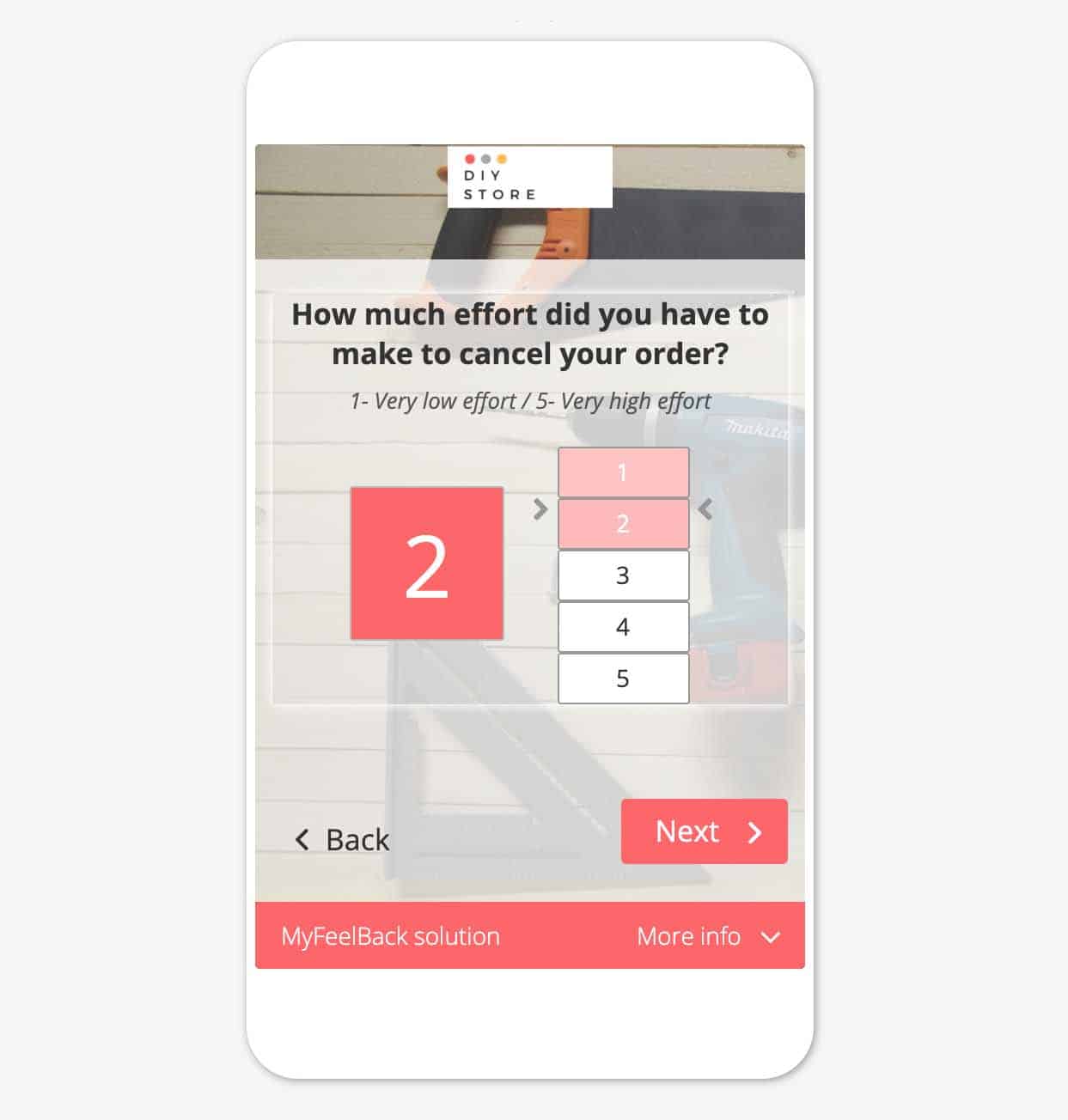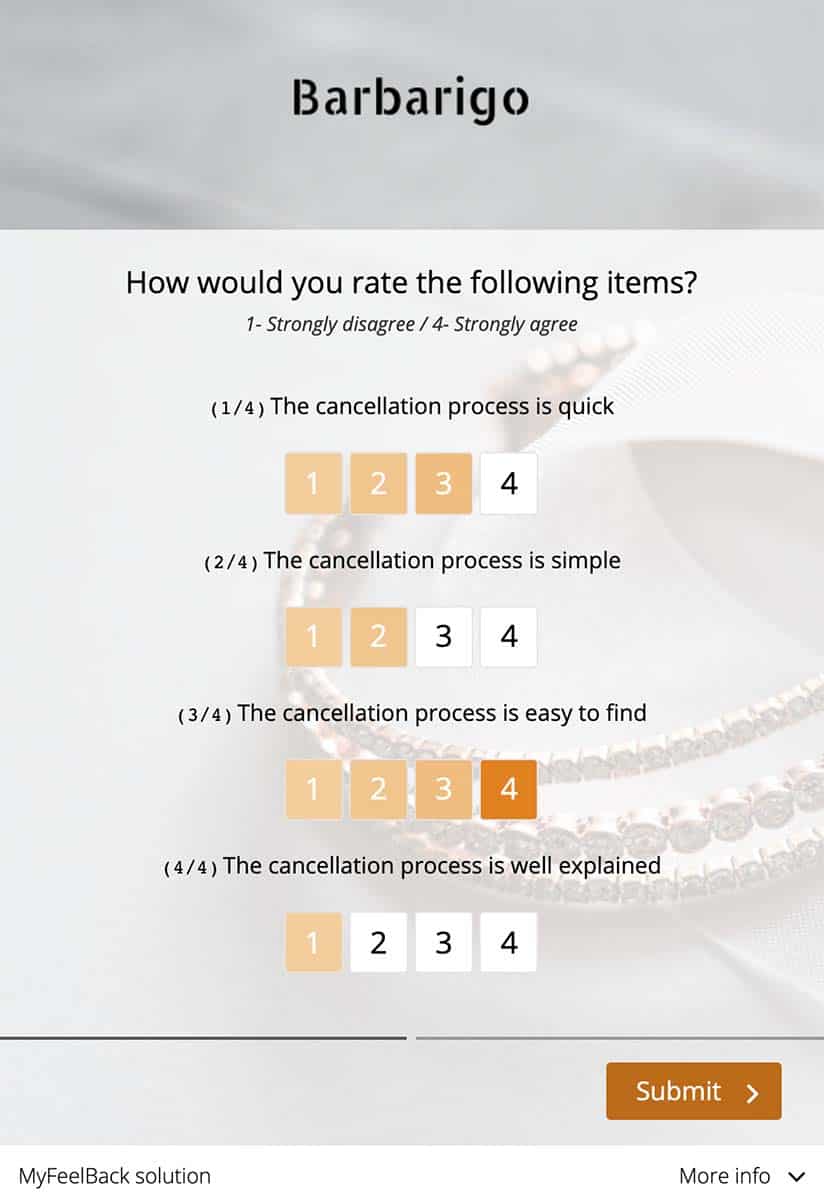There are two ways to react to an unpleasant event: complain or try to understand what happened. In Retail, order cancellations can represent a significant loss of revenue. A customer orders a product and decides, for whatever reason, to cancel it. Why? The best way to find out is to ask them directly with a...
There are two ways to react to an unpleasant event: complain or try to understand what happened. In Retail, order cancellations can represent a significant loss of revenue.
A customer orders a product and decides, for whatever reason, to cancel it. Why? The best way to find out is to ask them directly with a satisfaction survey.
Below are 4 key questions to include in your customer satisfaction survey following an order cancellation.
This survey will help your understand why the customer cancelled and to identify which areas you need to work on to reduce this rate.
Understanding the Reasons Behind an Order Cancellation
Let’s begin by clarifying that this article is about order cancellations and not cart abandonment. Your customer has decided to cancel their order after confirming it. They have already completed the order process. Whereas in the event of cart abandonment, the customer terminates the order process before completing it.
But since these two topics are closely linked, feel free to take a look at our article about the art of building a survey to effectively reduce cart abandonment.
Now, let’s get back to our article: satisfaction surveys following an order cancellation. We recommend dividing this survey up into 4 steps. The first question should seek to understand why the customer cancelled their order. Identifying the reason, or reasons, is key to identifying areas for improvement for your products and services.
Question 1 – “Why did you cancel your order?”
Here are several possible answers:
- The delivery times were too long
- I found it cheaper elsewhere
- I read negative product reviews
- I forgot to add a product to my basket
- I changed my mind
- The delivery address was wrong
- I chose the wrong product
- Other reason(s)
- If the respondent ticks this box, you can trigger a follow-up question: “Could you tell us more?”

Measuring Customer Experience with the Cancellation Process
We recommend adding a second question to measure the customer’s experience with the cancellation process. Are your customers satisfied with your cancellation terms and conditions? Were they able to cancel their order quickly and easily?
We suggest including two questions to measure this. First, the “CES” question.
“How easy was it for you to cancel your order?”
The Customer Effort Score (or CES) is a very useful indicator for measuring customer satisfaction with a point of contact or process. It helps measure the effort exerted by a customer to complete an action. In this case, the action is cancelling the order. The question could therefore by phrased as follows:
Question 2 – “How easy was it for you to cancel your order?”
The answers to this question will enable you to calculate your CES score. CES is usually based on a 5-point Likert
scale. In other words, the customer answers on a scale of 1 to 5.
This question is key to detecting any friction or irritants in your customer journey.

A Follow-up CES Question
You can enrich your “CES” question by asking a follow-up one, in order to understand what is behind the answer on a scale of 1 to 5.
Indeed, several parameters come into play when a customer assesses the effort they exerted: how quick it was to cancel their order, how easy, accessible, etc.
We recommend adding a question in the form of a matrix, assessing 4 elements:
Question 3 – “How would you rate the following statements:
- The cancellation process was quick.
- The cancellation process was easy.
- The cancellation process was easy to find.
- The cancellation process was well-explained.”
For each of the above, ask the customer to answer on a Likert scale from 1 to 4: strongly disagree, somewhat disagree, somewhat agree, strongly agree.
This question, in the form of a matrix, will enable you to measure:
- How your customers perceive and experience the order cancellation process.
- The areas you can work on to make the order cancellation process smoother and easier.

1 Last Question to Understand your Customers’ Future Intentions
We’re almost at the end of the survey. Let’s recap. We began by asking your customers about their reasons for cancelling an order. If you could only ask one question in your survey, this would be it. This first question looks at the “why”, at the reasons behind a cancelled order. Your customers’ answers to this question will help you identify areas to work on to reduce the number of cancellations in the future.
The next two questions (CES and the matrix) enable you to measure the “how”. How did the order cancellation process go? As you know, the customer experience has become key for standing out from the competition. The quality of your customer experience is in part based on the seamlessness of your customer journey. Which is what these questions are all about: measuring customer satisfaction with the order cancellation process and therefore the customer experience.
Of course, the main objective is for your customers to never cancel an order! Or as little as possible… But by improving the cancellation process, you can increase the likelihood that customers who have cancelled an order will order from you again in the future.
Speaking of the future… We recommend ending your survey with the following question:
Question 4 – “Do you plan on ordering from us again in the future?”
Answer choices:
- Yes.
- No.
If the customer answers “No”, try to find out why: “Could you tell us more?”
So, there you have it! A survey made up of 4 questions. You could add others but remember: you don’t need to ask a million questions. A survey’s performance, i.e., the participation rate, is directly correlated to the length of your survey. Short surveys produce the best results! You now have everything you need to build and deploy your very own satisfaction survey following an order cancellation. Have fun!








